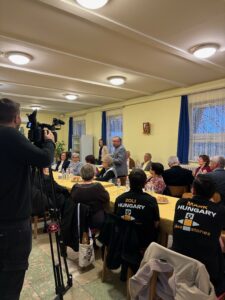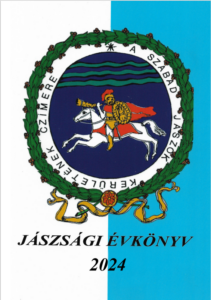
The 32nd Jászság Yearbook has been published
On 5th December 2024 in Jászberény, the dining hall of the Szent Erzsébet Hospital hosted the book launch of the 2024, 32nd issue of the Jászság Yearbook. This year, the Jászberényi Community House of the Foundation was also involved in five topics in the volume.
Retired high school teacher Terézia Csörgő, volunteer of the Jászberény Community House of the Foundation, presented the button collection of István Sinka this year. And nothing proves the actuality of the manuscript better than the fact that the “button collection of Rozi Gombos” has now been exhibited in the 150-year-old Jász Museum.
Anita Illés, a mental health specialist at Saint Elizabeth Hospital, interviewed Ágnes Kovács, a psychologist at the Csányi Foundation. This year’s new section of the Jászság yearbook was entitled “Psychologists in Jászság”, which of course included Ági Kovács, who talked about how there is indeed a way out of the disadvantaged situation.
Dávid Víg, the supporter of the Jászság group 3, prepared a translation of the history of Georgian and Ossetian cinema, with the aim of bringing this topic closer to the reading public.


This year’s youngest author of the volume was Máté Márk Kaptás, a member of the Jászság 1 group, who had the opportunity to publish in the Yearbook for the first time. Márk’s writing was placed in the “Outlook” column, as he presented the adventure of the jays in Sydney. In his article, Márk presented the activities of the Lego robotics project group, introduced the readers to the First Lego League competition and the results achieved by the team in the 2023/2024 school year. The Jász-Stones team made it all the way to the international finals during the competition, and they also received the first prize for the best innovation in Sydney.


Our author mentor Dorina prepared a local history research, presenting the mill industry of Jászárokszállás from the Middle Ages to the 1950s. The settlement mill industry was the most important in terms of grain milling for the population, but in the XX. from the middle of the century, socialist industrialization put a barrier to this. (Letícia Domján- Jászság group 4)



